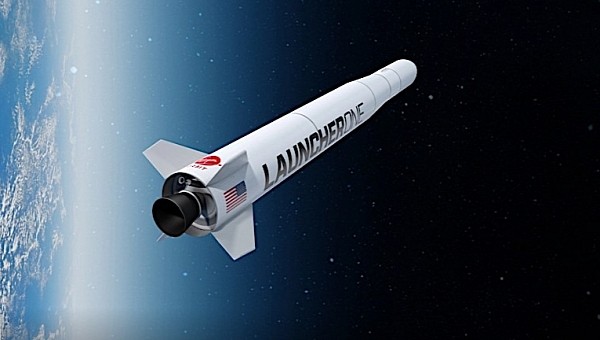Mixed feelings must have engulfed the people overseeing the Virgin Orbit Start Me Up mission from British Spaceport Cornwall, as the endeavor meant to put satellites in orbit from UK ground for the first time departed and reached space successfully, but failed to get to the assigned orbit.
Spaceport Cornwall is what a portion of the Cornwall Airport in South West England is now called, given its new nature: to support space launches performed by Richard Branson’s Virgin Orbit. It’s from there that the country’s first orbital launch departed on January 9, 2023, aiming to also become Virgin’s first international launch and Western Europe’s first commercial one.
If you want to split hairs, most of those objectives were met, as the Cosmic Girl launch aircraft, a converted Boeing 747, departed the runway as it should, carrying under one of its wings the LauncherOne two-stage orbital rocket. Inside were cradled commercial and government satellites that needed to reach orbit on behalf of seven customers.
Once the plane got to the target altitude (undisclosed, but it generally needs to be 35,000 feet/10 km), the rocket separated and ignited its engines. It then reached supersonic speeds and managed to climb beyond the Karman line and into space.
Once there, stage separation was next, followed by the ignition of the second stage. It was at this point, when the rocket was traveling at speeds of 11,000 mph (17,700 kph), that some sort of technical glitch of an undisclosed nature prevented the LauncherOne to reach its assigned orbit.
According to Virgin, the mission ended prematurely as a result of this, but we are not told anything as to what comes next for the pieces of hardware now floating aimlessly around Earth. As usual when it comes to such failures, the cargo is probably lost.
The company now says it will spend the following weeks investigating what went wrong, and even goes on to cite the difficulties of launching from a new location. Although, to be fair, since Virgin’s way of doing things doesn’t involve too much in the way of ground logistics, except for a runway, I personally fail to understand how that might have contributed to this particular kind of failure.
Keep in mind the company has done this several times before, and this is the first mishap. Until this week, Virgin Orbit, which is headquartered in Long Beach, California, used the Mojave Air and Space Port in the same state for its operations.
Its way of doing things is centered around horizontal launches, with an airplane taking off and releasing a rocket once it reaches a certain altitude. The piece of hardware used allows Virgin to send up as much as 300 kg (660 lbs) of cargo at a time.
Such missions will continue in the coming years, but from 2030 Virgin will include traditional, vertical launches in its offering, which will be performed from a location in Scotland.
If you want to split hairs, most of those objectives were met, as the Cosmic Girl launch aircraft, a converted Boeing 747, departed the runway as it should, carrying under one of its wings the LauncherOne two-stage orbital rocket. Inside were cradled commercial and government satellites that needed to reach orbit on behalf of seven customers.
Once the plane got to the target altitude (undisclosed, but it generally needs to be 35,000 feet/10 km), the rocket separated and ignited its engines. It then reached supersonic speeds and managed to climb beyond the Karman line and into space.
Once there, stage separation was next, followed by the ignition of the second stage. It was at this point, when the rocket was traveling at speeds of 11,000 mph (17,700 kph), that some sort of technical glitch of an undisclosed nature prevented the LauncherOne to reach its assigned orbit.
According to Virgin, the mission ended prematurely as a result of this, but we are not told anything as to what comes next for the pieces of hardware now floating aimlessly around Earth. As usual when it comes to such failures, the cargo is probably lost.
The company now says it will spend the following weeks investigating what went wrong, and even goes on to cite the difficulties of launching from a new location. Although, to be fair, since Virgin’s way of doing things doesn’t involve too much in the way of ground logistics, except for a runway, I personally fail to understand how that might have contributed to this particular kind of failure.
Keep in mind the company has done this several times before, and this is the first mishap. Until this week, Virgin Orbit, which is headquartered in Long Beach, California, used the Mojave Air and Space Port in the same state for its operations.
Its way of doing things is centered around horizontal launches, with an airplane taking off and releasing a rocket once it reaches a certain altitude. The piece of hardware used allows Virgin to send up as much as 300 kg (660 lbs) of cargo at a time.
Such missions will continue in the coming years, but from 2030 Virgin will include traditional, vertical launches in its offering, which will be performed from a location in Scotland.









